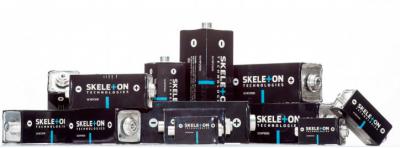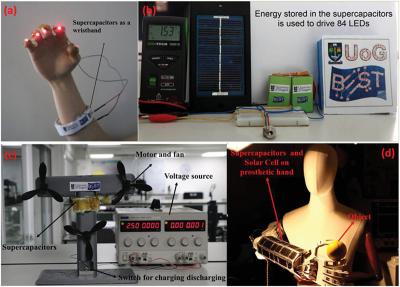
by MBF Admin | Apr 29, 2019 | 2D materials, Aerospace, AGM, Angstron Materials, Audio, Development, Graphene applications, Investment, Products, Research, Skeleton, Supercapacitors, Technical / Research
A study led by John Heinzel from the US Naval Surface Warfare Center in Philadelphia, along with researchers at the University of Texas at Arlington, has compared the performance of supercapacitors from four different manufacturers: Maxwell, Ioxus, JM Energy, and...
by MBF Admin | Apr 21, 2019 | 2D materials, Aerospace, AGM, Angstron Materials, Audio, Development, Graphene applications, Graphene investing and financials, Investment, Products, Research, Skeleton, Supercapacitors, Technical / Research
Skeleton Technologies, an Estonia-based company that produces graphene-based supercapacitors and energy storage systems, is to invest €25 million in its plant located in the German state of Saxony. With this investment, Skeleton aims to expand its research and...

by MBF Admin | Feb 18, 2019 | 2D materials, Aerospace, AGM, Angstron Materials, Audio, Development, Graphene applications, Graphene Solar, Investment, Products, Research, Supercapacitors, Technical / Research
Researchers at the University of Glasgow in Scotland have developed an electronic “skin” that can generate and store electricity for prosthetic devices.The technology consists of layers of a finely tuned graphite-polyurethane composite covered by graphene. The team...
by MBF Admin | Jul 3, 2018 | Cambridge University, Development, Energy storage, GNPs, Graphene applications, Graphene batteries, Graphene for Automotive, Investment, Products, Research, Roll to roll, Supercapacitors, Technical / Research, Versarien
Versarien, the advanced materials engineering group, has provided an update on its activities in relation to graphene-enhanced power storage devices like batteries and supercapacitors. The primary goal of incorporating graphene into these devices, Versarien says, is...
by MBF Admin | Jun 24, 2018 | Carbon Nanotubes, Development, Electronics, Graphene batteries, Graphene composites, Graphene production, Investment, Patents, Products, Research, Supercapacitors
First Graphene is collaborating with Flinders University to launch 2D Fluidics – a company that will aim to commercialize the Vortex Fluidic Device (VFD). 2D Fluidics is 50% owned by FGR and 50% by Flinders University’s newly named Flinders Institute for...
by MBF Admin | Jun 18, 2018 | Development, Electronics, Graphene applications, Graphene batteries, Graphene Foam, Graphene Sensors, Investment, Medicine, Products, Research, Rice University, Supercapacitors, Technical / Research
Rice University scientists have developed a simple way to create conductive, 3D objects made of graphene foam. The resulting objects may offer new possibilities for energy storage and flexible electronic sensor applications, according to Rice chemist Prof. James...



